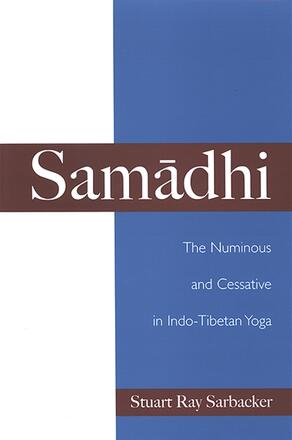
Samādhi
The Numinous and Cessative in Indo-Tibetan Yoga
Alternative formats available from:
Explores yoga and meditation in Eastern religions, incorporating psychological and social aspects of these practices.
Description
A historical and comparative study grounded in close readings of important works, this book explores the dynamics of the theory and practice of yoga in Hindu and Buddhist contexts. Author Stuart Ray Sarbacker explores the fascinating, contrasting perceptions that meditation leads to the attainment of divine, or numinous, power, and to complete escape from worldly existence, or cessation. Sarbacker demonstrates that these two dimensions of spiritual experience have affected the doctrine and cultural significance of yoga from its origins to its contemporary practice. He also integrates sociological and psychological perspectives on religious experience into a larger phenomenological model to address the multifaceted nature of religious experience. Speaking to a broad range of methodological and contextual issues, Samadhi provides numerous insights into the theory and practice of yoga that are relevant to both scholars of religious studies and practitioners of contemporary yoga and meditation traditions.
Stuart Ray Sarbacker is Lecturer in Religion at Northwestern University.
Reviews
"Stuart Sarbacker has written an important book for the study of yogic and meditative phenomena, one of few that advances the discussion from where Eliade left off in his own work. " — Philosophy East & West
"One of the most fruitful aspects of Sarbacker's investigation is his comparison between Classical Yoga and Buddhism, which underscores the yogic roots of Buddhism on the one hand and the Buddhist influence on Classical Yoga on the other. " — Traditional Yoga Studies
"Sarbacker tackles an immense swath of material and accompanying secondary literature and manages to do something genuinely creative with it all, that is, develop his own phenomenology of meditative experience via his central categories of the numinous and cessative. " — Jeffrey J. Kripal, author of Roads of Excess, Palaces of Wisdom: Eroticism and Reflexivity in the Study of Mysticism